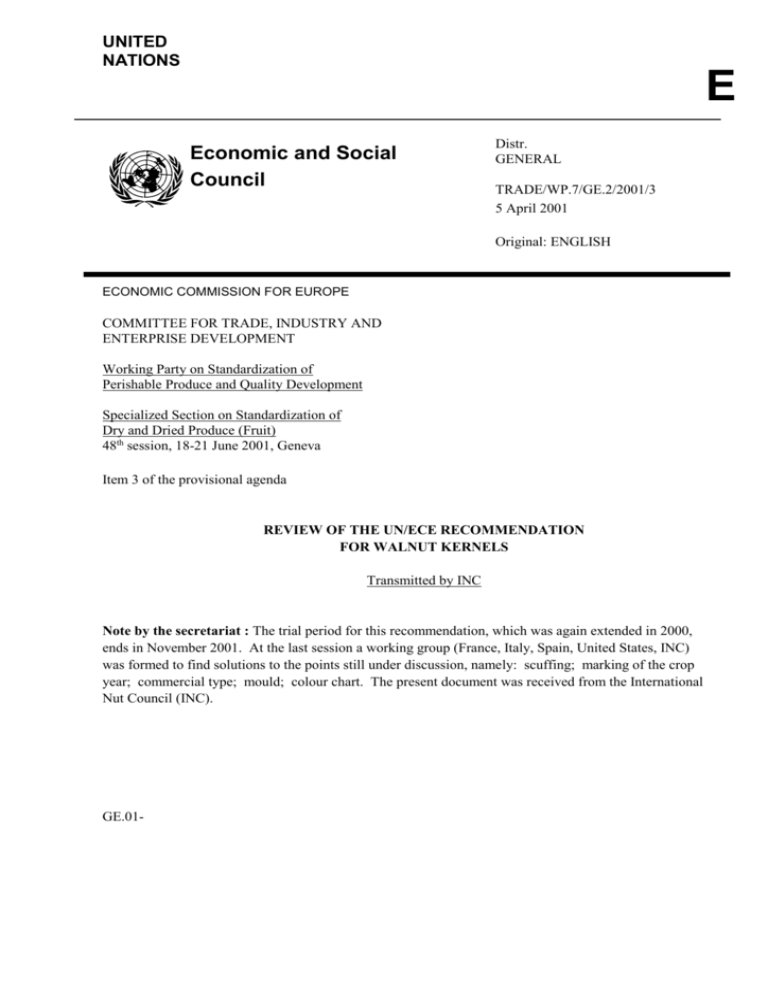2001_03
advertisement

UNITED NATIONS E Economic and Social Council Distr. GENERAL TRADE/WP.7/GE.2/2001/3 5 April 2001 Original: ENGLISH ECONOMIC COMMISSION FOR EUROPE COMMITTEE FOR TRADE, INDUSTRY AND ENTERPRISE DEVELOPMENT Working Party on Standardization of Perishable Produce and Quality Development Specialized Section on Standardization of Dry and Dried Produce (Fruit) 48th session, 18-21 June 2001, Geneva Item 3 of the provisional agenda REVIEW OF THE UN/ECE RECOMMENDATION FOR WALNUT KERNELS Transmitted by INC Note by the secretariat : The trial period for this recommendation, which was again extended in 2000, ends in November 2001. At the last session a working group (France, Italy, Spain, United States, INC) was formed to find solutions to the points still under discussion, namely: scuffing; marking of the crop year; commercial type; mould; colour chart. The present document was received from the International Nut Council (INC). GE.01- TRADE/WP.7/GE.2/2001/3 page 2 At the forty-seventh session of the Specialized Section on Dry and Dried Produce, INC volunteered to be a participant in two informal working groups to help define and make recommendations in certain areas. Our recommendations are as follows : 1. Scuffing First it is our opinion that the definition "scuffing" should apply only to halves as it is of no importance to pieces. We are also of the opinion that there is a definite market for both handcracked and machine-cracked. Hand-cracked is a premium product that should demand a premium price and is mostly used for decoration. Machine-cracked, on the other hand, should not be held to the same scuffing standard as the premium priced hand-cracked product as it is used by the more economy-minded buyer. We would agree with the need for two standards, one for hand-cracked and another for machine-cracked, with the only difference being a higher allowance for machine cracked scuffing. Should the Specialized Section desire to have one standard we suggest: Extra Class: Class I: Class II 2. scuffing less than 20 % of the skin should not be considered a defect. scuffing less than 33 % of the skin should not be considered a defect. scuffing should not be considered a defect. Crop Year We would support crop year being optional for all grades for the following reasons. Crop year is not necessarily an indicator of product quality. In some years old crop quality can be better than the new crop. Consumers can be misled thinking new crop is better quality. Furthermore, this would be impossible to enforce since repackaging is done around the world and we believe this rule would inspire lots of cheating. It would be logical for a rebagger who is packing old crop after the new crop arrived to simply call everything new crop. 3. Moisture (In Shell) We do not favour a specific method, but we feel that whatever method is used, the results must be verifiable by an AOAC approved method.







